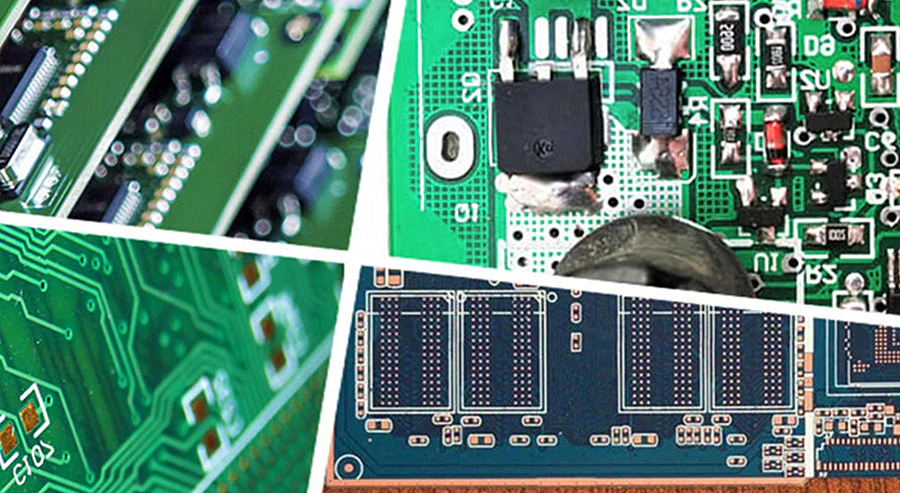
PCB inks are inks that are used on printed circuit boards
What Is PCB Ink?
PCB inks are inks that are used on printed circuit boards (also known as PCBs), and they have essential physical features like viscosity, thixotropy, and finesse. Frequently widely utilized for printing, marking, and other uses.
There are three main categories of PCB ink,which are:PCB etching ink, Solder mask Ink and PCB silkscreen ink.These are all very common in PCB production.There are also inks like conductive carbon oil and conductive silver oil (they are also known as conductive carbon ink and conductive silver paste). In general, conductive ink for PCB are not as common as other PCB inks.And there’s things like PCB marking ink which we’re not gonna going deep into today.
What Are The Common Types Of PCB Inks?
Today, we will be talk about three kinds of PCB inks,and they are all pretty common in our daily life,which are:
Etching Ink;
Solder mask Ink;
PCB silkscreen ink.
What Is PCB Plating?
PCB plating is a metal deposition process that ensures that these PCBs are protected from oxidation. PCB plating is not only to help assemble components, but also to increase the copper thickness of surface pads and conductors, as well as improve the strong copper connection between the layers in the vias. Electroless copper plating PCB is very convenient. In addition, in PCB design, PCB plating provides a clear surface finish and an accurate soldering surface for assembled components.
Through hole plating – The process of drilling holes with copper fill to provide a current path from the surface of the board to the inner layer, between two inner layers, or from one surface to another. These plated through-holes (PTH) are often referred to as through-holes.
Surface plating or finishing – The process of covering surface copper traces to prevent environment, oxidation, moisture, and contamination and to provide a more suitable surface for soldered components during printed circuit board assembly (PCBA).
Both of the processes listed above can be referred to as PCB electroplating. While the primary purpose of the two is to help facilitate good current flow along the circuit path of the board, there are differences in the materials used.
Simply put, PCB trace plating is an external trace that is also present on the PCB. In addition, they help protect the board. Therefore, if the PCB is not covered, the unfixed end of the circuit board may be oxidized. Also, this can lead to PCB damage. In addition, damage renders the ends of the board unusable. PCB plating options also have a lot of them.
PCB Plating Process Flow.
The first step is the chemical process, in which a thin copper layer is deposited on the surface area of the circuit board as well as inside the drilled hole. This is important in the PCB copper plating process.
Clean the holes drilled in the board to remove residues and contaminants generated during the drilling process. More PCB hole knowledge.
The interior of the wells is prepared using micro etching, which helps improve copper bonding.
Photoresist material is added to the bottom and top of the board and exposed to ultraviolet light. This UV exposure is limited to the free area without the pattern.
Next, wash off the photoresist and cover the board area with hardened photoresist.
The plate is connected to the cathode of the current and immersed in a chemical bath for plating. Dissolved copper is attracted to a negative charge and deposited on the exposed circuit.
Next, the board is immersed in a cleaning and plating bath to form a uniform copper layer.
After that, In the process of board manufacturing, the tin is plated on copper to protect the circuit.
Next, remove the non-circuit copper and photoresist.
In the last step, the tin is removed, and the copper circuit remains.
More Stories
The Future of Online Slot Gaming in 2023: สล็อตเว็บตรง ไม่ผ่านเอเย่นต์ 2023
Introduction The world of online slot gaming has been evolving at a rapid pace, and 2023 promises to be an...
The Essential Tool for Your Courier Business: Advanced Courier Dispatch Systems
Advanced courier dispatch systems are essential tools for any courier business that wants to streamline its operations, improve efficiency, and...
Cutting-Edge Optics: Criterion Technology, Inc
Criterion Technology, Inc. is at the forefront of the field of optics, developing cutting-edge technologies that are changing the way...
10 Best 3DS Games Of All Time – Top 3DS Games
3DS Games are titles developed and published for the Nintendo 3DS console. This is a popular Nintendo handheld system, released...
Steps for Finding the Best Solar Installation Companies
You probably understand by now that solar energy has reached a point of significant growth for people all around us....
Download Dynamons World mod apk for Android with Maxdroid
Dynamons World is a role-playing video game that fights strange creatures known as Dynamons. In this game, players will engage...